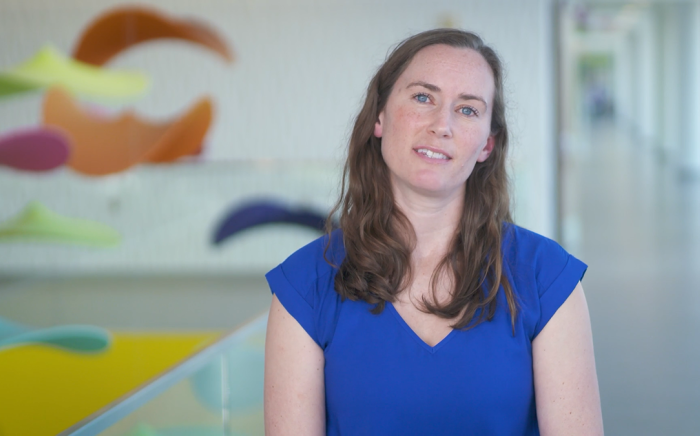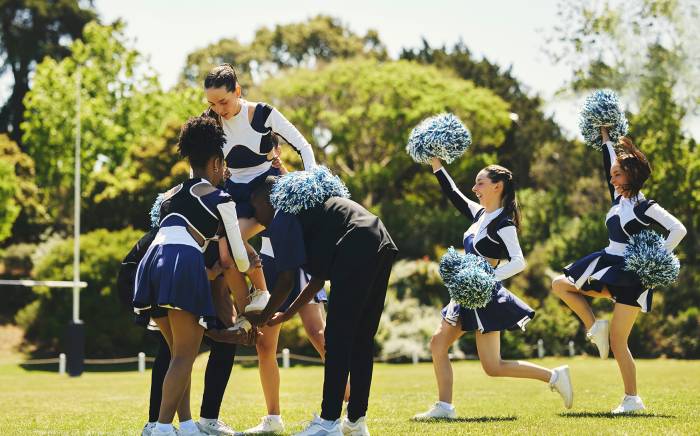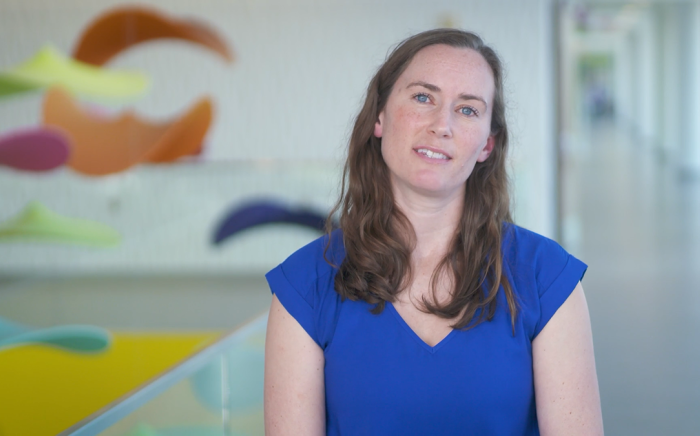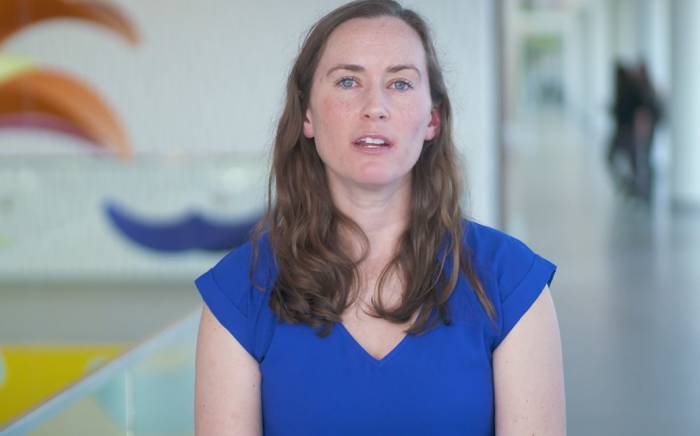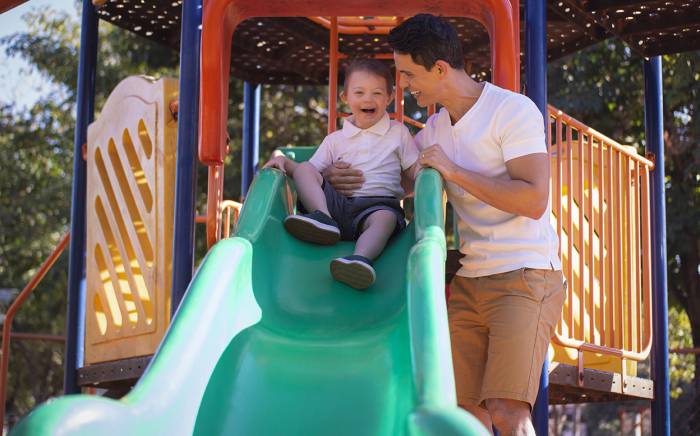 As Loewy Noud stood next to her hospital bed for the first time after undergoing surgery to correct scoliosis, her mother was amazed. Loewy was at least two inches taller.
As Loewy Noud stood next to her hospital bed for the first time after undergoing surgery to correct scoliosis, her mother was amazed. Loewy was at least two inches taller.
“I remember looking at her and saying ‘wow!” recalls Loewy’s mother, Carol. “I could tell she was taller immediately.”
Loewy, an active 15-year-old from Glen Carbon, Ill., was diagnosed with adolescent idiopathic scoliosis when she was 12 years old. “I actually didn’t know my spine was curved until I had a sledding accident in 2013,” she says. “I was tubing downhill, hit a ramp and was launched about four feet up into the air. When I landed, I smacked my tailbone really hard.”
Worried about a possible fracture, Loewy’s mother took her to an urgent care center. What the doctor saw on an x-ray, however, wasn’t a fractured tailbone. It was the backward “C” shape to Loewy’s spine, a characteristic of scoliosis.
“She never had a scoliosis check in school and she didn’t have any pain previously, so it was surprising to hear that she had a significant spinal curve,” says Loewy’s mother, Carol Noud.
Loewy was soon referred to Scott Luhmann, MD, a Washington University pediatric spine reconstruction specialist at St. Louis Children’s Hospital who sees hundreds of children each year with spinal abnormalities. In adolescents, scoliosis can affect as many as four in every 100 teens, making it one of the most common spinal deformities diagnosed in children.
“Dr. Luhmann not only confirmed that I had scoliosis, he also noticed a difference in my shoulder height and said I had a slight hump in my back,” Loewy says. “Because I wasn’t finished growing yet, he said to wait and see what happened to my spine as I got older.”
Over the next six months, Loewy’s spine bent further, changing slowly from a “C” shape into an “S” shape, with two significant curves. Dr. Luhmann first discussed using a custom back brace to prevent further progression of the scoliosis, but because one of Loewy’s curves impacted the upper regions of the thoracic spine, bracing wasn’t optimal. By fall of 2014, with one of the curves approaching 50-degrees, Dr. Luhmann recommended surgery and sent Loewy for physical therapy to strengthen her core and back in preparation for a spinal fusion. Because Loewy also wanted no interruptions in her school schedule, surgery took place the following summer, in June 2015. During the four-hour procedure, called a posterior spinal fusion with segmental spinal instrumentation, Dr. Luhmann gently straightened Loewy’s spine and inserted two 12” cobalt chrome rods and 15 screws to hold the rods in place. By the next morning, Loewy was up and walking in her hospital room.
“Well, I’m not going to sugar coat it and say it was easy, but Dr. Luhmann told me every patient always wishes they got up as early as they could,” says Loewy. “I would sit for 20 minutes and walk twice a day until I could walk around the nurses’ station and go up some stairs. My mom also had to learn how to keep my spine straight, roll me to one side, and get me out of bed.”
“It was definitely a challenging recovery,” admits Carol. “I had to help her sit in a chair, get to the bathroom and bathe. It took us about two weeks before we both said we got this.”
Loewy couldn’t take physical education classes for a year and was restricted from lifting heavy items for months. She also couldn’t run or jump around. When she was finally cleared to resume activities, she was thrilled.
“I play tennis for my high school, swim, ride bikes and even run now,” she says with a smile. “And I’m 5’9” tall. Before my surgery, I was 5’7”.
“I can’t say enough good things about Dr. Luhmann and his team,” adds Carol. “I always felt they were thinking both as a parent and as a kid whenever they talked to Loewy and me. We had some tough days because it was such an extensive surgery, but it was all worth it.”

